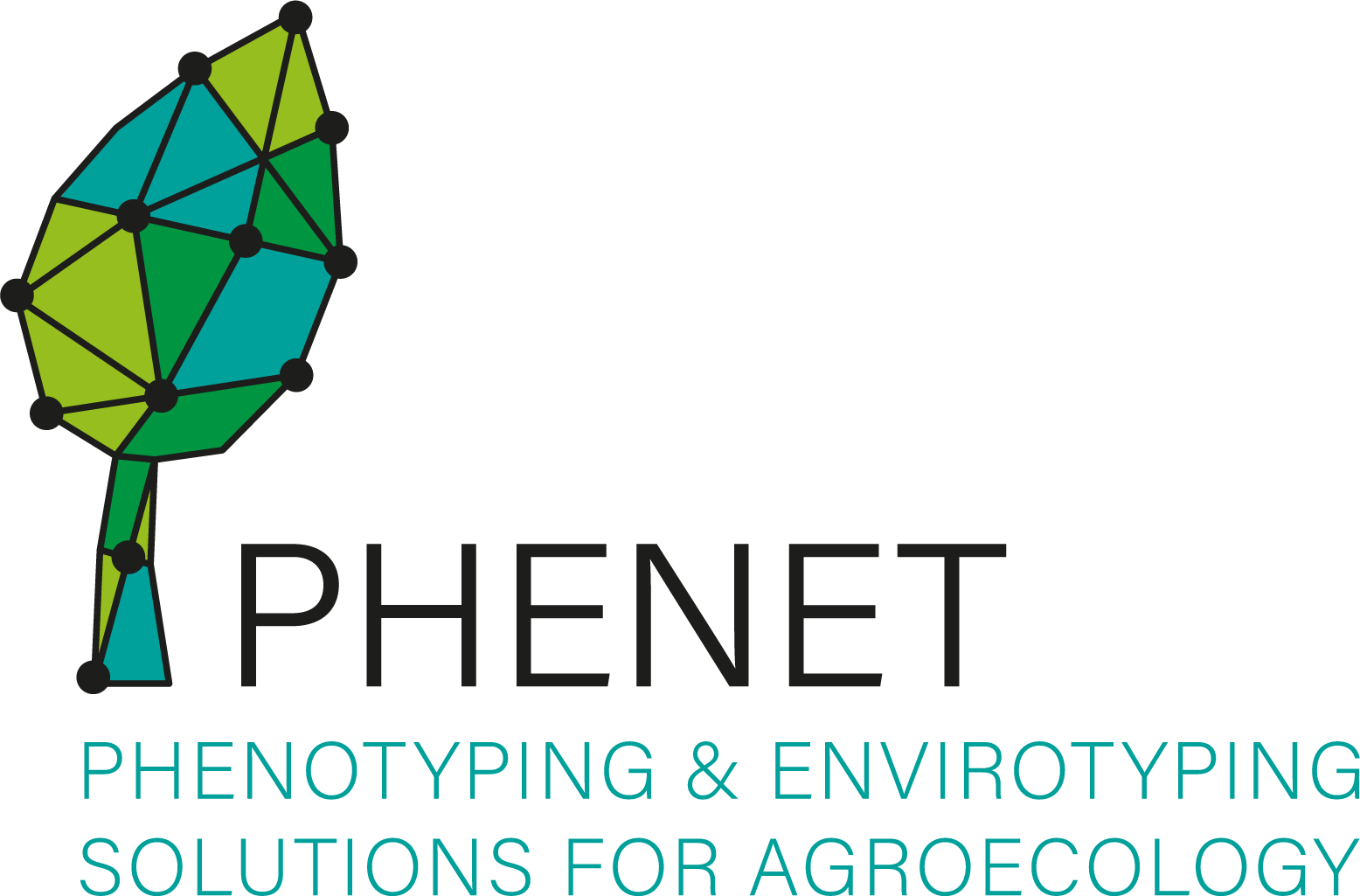Work Packages
PHENET methodology is based on the following three pillars:
- Use Cases (covered by Workpackage (WP1),
- methodological/technical supporting activities (WP2 to 5), and
- impact-oriented activities (WP1 and WP6) to ensure the diffusion and exploitation of knowledge, tools and methods, as future services.
Each use case should embark different EU countries and commit multiple partner to foster collaboration and community building.
A series of 4 methodological WPs were shaped in support, focusing on pheno-devices and AI integration (WP2), representativeness assessment and multiscale data fusion with EO services (WP3), FAIR data services (WP4) and innovative models for GxExM analysis (WP5). Industry co-development of tools and methods will be part of WP2 and WP3. Thanks to impact-oriented activities joining the work of WP1 (leveraging on UC outcomes) and WP6 (training and outreach), we will transform new methods and tools into advanced services for the RIs.

Work Package 1 supports the implementation and alignment of the use cases and fosters cross-fertilisation between the use cases and the WPs as well as related stakeholders. It further transfers the novel tools and methods benchmarked within the UCs into new services for agroecological transition within the RIs.
Work Package 2 aims to co-develop a series of adaptable phenotyping devices with AI embedded targeted to agroecological traits. In particular, it will provide fully operational devices with multi-optical head, provide the associated series of computer vision models based AI, and provide embedded AI to directly extract traits.
Work Package 3 aims to develop digital solutions for better representation of spatial and temporal variation in field conditions and to provide a wider access to phenotypic data using EO services. More specifically, WP3 will (1) account for spatial and temporal variability of environmental conditions in field plots for an improved statistical power in phenotypic analyses (2) develop methods for cross scales data fusion from EO, UAV and on-field sensors, and (3) develop and distribute plant traits estimation algorithms based on EO services.
Work Package 4 will enable data flow from data acquisition (WP2 &3) to modelling (WP5) and publication by standardising and integrating interoperable data produced by platforms at the dataset and databases levels. It will: (1) shape services to enable FAIR data curation, storage and exchange (2) enable Open Science policy through data sharing, interoperability with modelling and sustainable data publication on existing open repositories, and (3) connect to EU data portals through an integrative knowledge graph using enriched GeoDCAT and thematic vocabularies.
Work Package 5 aims to close the gap between experimentation facilities and model improvement and leverage AI methods together with the knowledge of process-based models for improved experimentation across the GxExM continuum. To this end, this WP aims to (1) develop the methodological framework for deploying digital twins, i.e. high-resolution, tailored counterparts of individual plants, experimental fields or real farms and demonstrate such services in UCs, and (2) employ recent advancements from AI, together with existing domain expertise, in the form of process-based models to develop new hybrid modelling services in PHENET research infrastructures.
Work Package 6 acts across the other WPs and the UCs. It aims to ensure that the plant phenotyping and envirotyping related community will be able to access, use, and develop tools, methods and services to accelerate and finalize their research. In charge of communication, dissemination, exploitation and training, it will (1) enhance scientific competitiveness of European RIs by increasing competences of RI staff around current state-of-art toolboxes and the next generation of scientific instrumentation, (2) increase the user base of RIs around next generation technologies, and (3) support cross-fertilisation and development of innovative companies based on NGT developments in UCs.
Work Package 7 objectives are three-fold: (1) At the strategic level, to steer the project to ensure the project reaches its objectives and delivers outputs that will generate the expected outcomes; (2) At the operational and contractual level, to put in place procedures and tools ensuring that the project follows the Grant Agreement, the Consortium Agreement and that the work plan produces timely and quality results;(3) At the administrative level, to organise project meetings and collaborative work, prepare project reports and ensure efficient collaboration and communication amongst partners.


